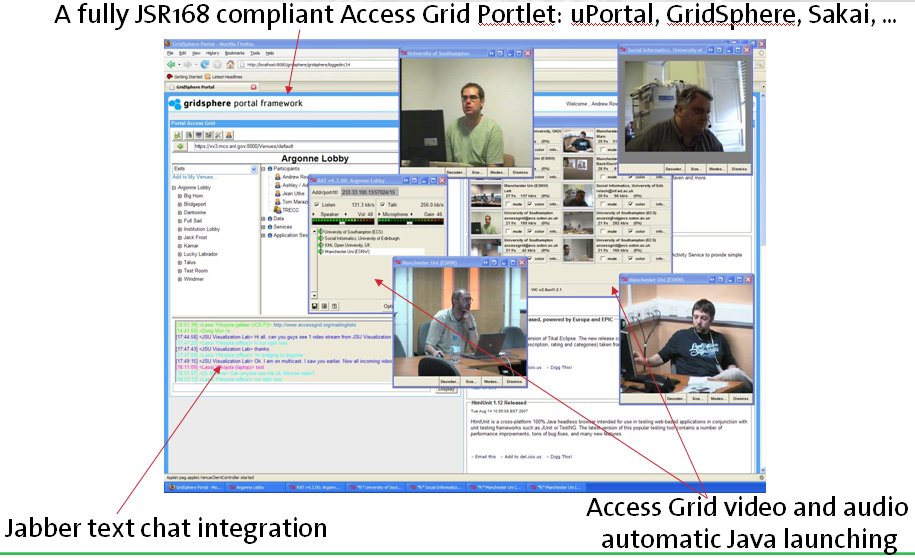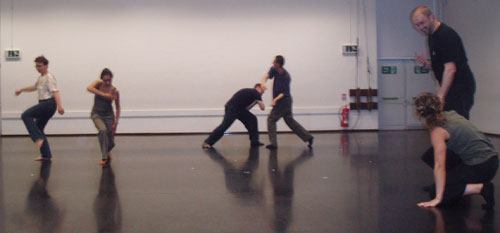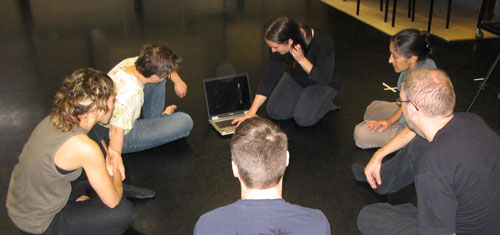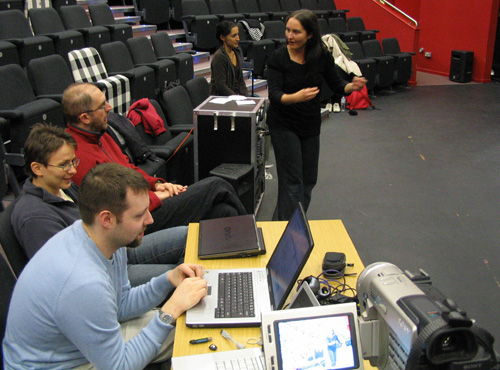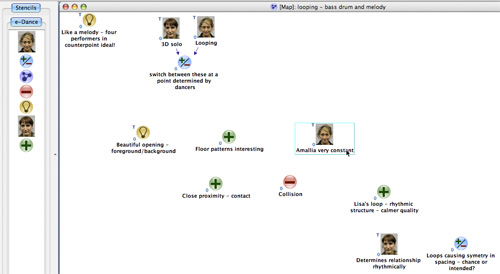Cohere: Web 2.0 knowledge mapping goes into beta
20 12 2007One of the e-science collaboration technologies whose potential in being investigated for choreographers is knowledge and dialogue visualization. In the Memetic project, we integrated the Compendium desktop application with video conferencing. Compendium is our point of departure in e-Dance, but in a parallel project (Open Sensemaking Communities) we have been developing a web-centric tool called Cohere.

Cohere is exploring the space opened up by the Web 2.0 paradigm for social networking and user-generated ‘indigenous’ content (cf. websites like Flickr and YouTube) and resources like tagged, bookmarked websites (cf. del.icio.us). At the same time, we are interested in coherence, and the name suggests: how do we weave coherent narratives that make sense of the information ocean. Web 2.0 tools make it easy to collect isolated media fragments, but what are the meaningful relationships between these in a given context?
We can translate this challenge into the e-Dance world by asking how, for instance, we can enable a team of choreographers or students to weave a set of personal, and merged, webs of connections between video clips of dance rehearsals or performances? In other words, how might they overlay, share, and contest their interpretations — their narratives — as layers over the raw footage? Almost like layers of perspectives on top of a geospatial map that can be turned on and off… [which is why we call this Knowledge Cartography]
Cohere is the start of our answer to this. It’s just gone into public beta, and we invite you to play with it. It is, very simply, a tool for making connections, and then sharing those maps with others as hyperlinks, web feeds, or embedded in other websites. Track its development via the blog. The concept can be summarised in “3 easy steps”…
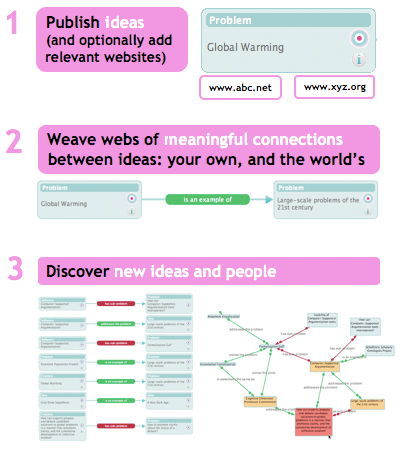
This is what it looks like for real in Cohere. First we add a new “Idea” (everything’s an Idea), for e-Dance Project (see right screenshot).
Then we make some connections to the research questions motivating the project, and grab the snippet code to embed the map below. This shows the e-Dance Project, which exists now as a node in the network, with a context, that is, possible meanings or significances — in this case, its rationale:
We’ll return to this in future posts as we prototype new examples.
Categories : Software

